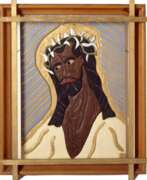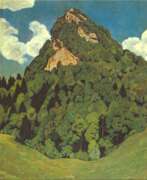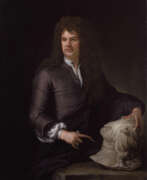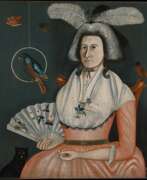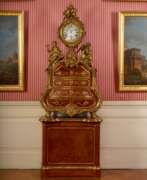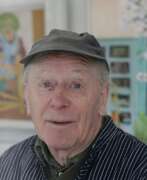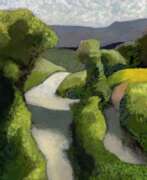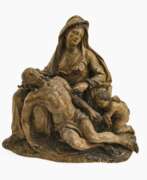Wood carvers


Ivan Mikhailovich Abalyaev (Russian: Иван Михайлович Абаляев) was a Russian artist, recognized for his influential role in the Leningrad School of Painting. Born into a peasant family in 1924, Abalyaev's artistic journey began at the Leningrad Institute of Painting, Sculpture, and Architecture. His art, characterized by a profound connection to Russian rural life and landscapes, captures the essence of his early life experiences in Nizhnyaya Loshikha, Smolensk region.
Abalyaev's works are renowned for their vivid portrayal of the Russian countryside, often reflecting the serene and laborious life of its inhabitants. His mastery in landscape painting earned him significant recognition, including the prestigious title of People's Artist of the Russian Federation. Throughout his career, Abalyaev remained dedicated to exploring and expressing the natural beauty and the cultural depth of rural Russia, contributing significantly to the cultural heritage of his country.
For those interested in the evocative landscapes and cultural narratives captured by Ivan Mikhailovich Abalyaev, his works are valuable collectibles and are often featured in art galleries and auctions. To stay updated on new discoveries of his works and upcoming auction events featuring Abalyaev, signing up for updates is highly recommended. This will ensure that collectors and art enthusiasts don't miss out on the opportunity to own a piece of Russian art history.


Hezekiah Augur was an American sculptor and inventor. He was self-taught and, unlike many other American sculptors of the 19th century, spent his entire career in New Haven.
Hezekiah Augur was the son of a carpenter and learned the woodcarving trade early on. He later invented a lace loom and a machine for carving piano legs. He then switched to marble.
Hezekiah Augur was a member of the Connecticut Academy of Arts and Sciences.
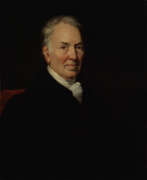

Thomas Bewick was an English wood-engraver and natural history author. Early in his career he took on all kinds of work such as engraving cutlery, making the wood blocks for advertisements, and illustrating children's books. He gradually turned to illustrating, writing and publishing his own books, gaining an adult audience for the fine illustrations in A History of Quadrupeds.
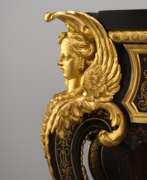

André-Charles Boulle, a French artist and cabinetmaker, was celebrated for his mastery in marquetry, a decorative technique involving inlaid veneers of wood, metal, and tortoiseshell. Born in Paris in 1642, Boulle's work defined luxury and sophistication in 17th and 18th-century French furniture, earning him the title of "Premier ébéniste du Roi" under Louis XIV. His contributions to art and culture extend beyond mere craftsmanship, embodying the opulence of the Louis XIV style and influencing European decorative arts profoundly.
Boulle's innovative techniques, particularly his unique use of marquetry, known as "Boulle work," involved intricate patterns of brass, pewter, and tortoiseshell, setting new standards for furniture design. This approach allowed him to create stunning visual effects, with his creations including clocks, cabinets, and tables that showcased both artistic flair and technical brilliance. His work, characterized by elaborate motifs and an exceptional blend of materials, is regarded as the epitome of Baroque artistry, blending sculpture, painting, and architecture into functional objects of beauty.
Several of Boulle's masterpieces are preserved in prestigious museums, such as the Louvre and the Palace of Versailles, where they continue to captivate visitors with their intricate details and historical significance. Notable works attributed to him, like the intricate coffers on stands and monumental cabinets housed in the J. Paul Getty Museum, reflect his role as a "painter in wood," celebrating French military victories and the grandeur of the Sun King's court. These pieces, never signed but attributed to him based on stylistic elements and historical records, highlight Boulle's innovative use of materials and his impact on the decorative arts.
For collectors and experts in art and antiques, André-Charles Boulle's work represents the zenith of French decorative arts. His legacy is not only in the beauty of his creations but also in the techniques he perfected, which continue to inspire contemporary designers and craftsmen. Those interested in the elegance and history of Boulle's work are encouraged to sign up for updates on new product sales and auction events related to this iconic artist. This subscription offers a unique opportunity to connect with the world of André-Charles Boulle, ensuring enthusiasts are informed of the latest discoveries and offerings that celebrate his enduring influence on culture, art, and design.


Karel Brož (Russian: Карл Осипович Брож) was a Czech and Russian artist, renowned for his detailed illustrations and watercolors. Born on November 25, 1836, in Prague, he studied at the Vienna Academy of Fine Arts and later moved to Russia, where he became a prominent illustrator for various publications, including "Vsemirnaya Illustratsiya."
Brož's work is characterized by its meticulous attention to detail and vibrant depictions of historical and everyday scenes. His illustrations, particularly for Russian periodicals, captured the essence of 19th-century life and remain highly regarded in art circles.
Collectors value Brož's pieces for their historical significance and artistic quality. His illustrations have been featured in numerous exhibitions and are part of prestigious collections. For those interested in historical illustrations, Karel Brož’s work offers a unique glimpse into the past.
Sign up for updates on new product sales and auction events related to Karel Brož to stay informed about the latest opportunities to acquire his work.
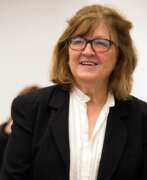

Vija Celmins is a Latvian-American artist. She is best known for her photorealistic paintings and drawings of natural and man-made objects.
Celmins and her family fled Latvia during World War II and eventually settled in the United States. She studied art at the John Herron School of Art in Indianapolis and later at the University of California, Los Angeles.
Celmins began her career as a painter in the 1960s, and by the 1970s she had developed her signature style of photorealism. She is known for her painstaking attention to detail, and her paintings and drawings often take months or even years to complete. Some of her most famous works include images of the night sky, oceans, and rocks.
Celmins has been the subject of numerous solo exhibitions in museums and galleries around the world, including a retrospective at the Centre Pompidou in Paris in 2006. Her work is held in the collections of many major museums, including the Metropolitan Museum of Art in New York, the Museum of Modern Art in New York, and the National Gallery of Art in Washington, D.C.


Juan de Mesa y Velasco was a Spanish Baroque sculptor born in 1583 in Córdoba and died in 1627 in Seville. He is renowned for creating several effigies used in Holy Week processions in Seville, showcasing his masterful approach to religious art during the Baroque period. Mesa was a prominent disciple of Juan Martínez Montañés, embodying the transition from Renaissance ideals to Baroque emotion and realism.
His work is distinguished by its realistic portrayal of human anatomy, intense expression, and dramatism, particularly evident in his crucified Christ figures. These sculptures not only convey the physical torment of Christ but also embody a deep spiritual passion, aligning with the Catholic Church's post-Tridentine mandates for art to be accessible and educative for the faithful. Among his notable works are the Cristo de la Buena Muerte and Jesús del Gran Poder, which remain central to Seville's Holy Week celebrations and are celebrated for their emotional depth and realism.
Despite his premature death at 44, possibly due to tuberculosis, Mesa's legacy endures through his sculptures, which continue to be objects of devotion and admiration. His ability to capture the intensity of biblical narratives and the human form has made him a pivotal figure in Spanish Baroque sculpture, with works held in high regard and still influencing the tradition of religious procession figures in Spain.
For collectors and experts in art and antiques, Mesa's work represents a peak of Baroque sculptural art, imbued with spiritual depth and technical mastery. To stay informed about new discoveries and auction events related to Juan de Mesa y Velasco, signing up for updates is recommended. This ensures access to the latest sales and insights into the enduring legacy of this Baroque master.


Niklaus Manuel Deutsch was a Swiss painter, graphic artist, poet and political reformer.
Niklaus Manuel Deutsch's artistic style is influenced by the Renaissance and Albrecht Dürer. Along with Holbein, he is considered the most important representative of the Renaissance in Switzerland. He created designs for jewellers, altarpieces, portraits and other paintings. His richly coloured canvases depict mainly mythological and biblical scenes.


Giovanni di Ser Giovanni Guidi, more famously known as Scheggia, was an Italian painter whose contributions to the arts during the Renaissance period have carved him a distinct niche in art history. Born in Italy, Scheggia was a craftsman of narrative and decorative painting, specializing in altarpieces, cassone panels, and birth trays, which were popular in Florentine culture for their intricate storytelling and detailed artistry.
Scheggia is perhaps best known for his lively and detailed panels that graced the fronts of marriage chests, known as cassoni. These pieces were celebrated for their vivid depictions of allegorical and mythological scenes, showcasing Scheggia's skillful use of color and composition to bring tales to life. His work not only adorned the homes of the wealthy but also served as a testament to the rich cultural and artistic fervor of Renaissance Florence.
One of Scheggia's most notable works, the "Madonna of Humility with Angels," showcases his ability to blend divine and earthly realms in a harmonious composition that speaks volumes of his mastery over form and space. This, among other works by Scheggia, can be admired in museums across Italy, offering a glimpse into the vibrant Renaissance art scene.
For collectors and experts in art and antiques, Giovanni di Ser Giovanni Guidi represents an intriguing exploration into the less-trodden paths of Renaissance art. His paintings are a celebration of the era's innovative spirit, offering insights into the everyday lives, cultural practices, and artistic achievements of the time.
To delve deeper into the world of Renaissance art and uncover the gems of Giovanni di Ser Giovanni Guidi's legacy, signing up for updates is an essential step. This subscription ensures that enthusiasts and collectors are the first to know about new discoveries, exhibitions, and auction events related to Scheggia's work, providing exclusive opportunities to enrich their appreciation and collections of Renaissance art.


Albrecht Dürer, born on May 21, 1471 in Nuremberg, Germany, is widely regarded as the greatest German Renaissance painter. His contribution to painting and engraving is quite significant and has left a notable mark on the art world. Dürer's early life was spent in Nuremberg, a city that played a crucial role in his development as an artist and was also the site of his death on April 6, 1528. He was the son of the goldsmith Albrecht Dürer the Elder, from whom he initially learned the basics of drawing and metalworking.
Dürer's work is characterized by a combination of Gothic elements with the emerging Renaissance style, which is evident in his woodcuts and engravings. His oeuvre encompasses many themes, including religious works, altarpieces, portraits, and self-portraits. His outstanding prints, such as The Knight, Death and the Devil (1513), St. Jerome in his Study (1514) and Melencolia I (1514), are known for their intricate detail and artistic skill. Dürer was also one of the earliest European landscape painters, as evidenced by his watercolor paintings.
Equally significant are his theoretical writings on mathematics, perspective, and ideal proportions in art. Dürer was not only an artist but also a keen intellectual, his interests encompassing various aspects of culture and science. He served as court painter to Holy Roman Emperors Maximilian I and Charles V, completing several significant art projects for them. Dürer's keen mind and versatile interests brought him into contact with the most prominent figures of his time, including theologians and scientists of the Reformation era.
Dürer's self-portraits are particularly famous, demonstrating not only his artistic skill but also his self-awareness and personal style. These portraits attest to his growing success and confidence as an artist. Dürer's legacy is immense; he influenced not only the art of his time, but also left an indelible mark on the history of European art.
For those interested in the work and legacy of Albrecht Dürer, we recommend subscribing to our updates. Our subscription service is designed to provide information about new sales and auction events related to this remarkable artist. Join us to keep up to date on the latest art and antiques related to Albrecht Dürer.


Nikolai Ivanovich Fechin (Russian: Николай Иванович Фешин) was a Russian and American artist of the first half of the twentieth century. He is known as a painter, master of domestic and portrait genres, representative of Impressionism and Art Nouveau. Nikolai Fechin was also a graphic artist, sculptor, and carver, and at the initial stage of his professional career he showed himself as a teacher.
Nikolai Fechin spent a considerable part of his life in emigration, where he quickly managed to achieve recognition and commercial success. He created more than two thousand works, which are now scattered around the world. The largest collection of Fechin's works is in Russia in the Museum of Fine Arts of Tatarstan. And some of his works are in the collections of more than thirty museums in the United States, as well as in private collections.


Gregorio Fernández was a Spanish Baroque sculptor, celebrated for his profound impact on religious art during the 17th century. Born in Sarriá, Lugo, in 1576 and later settling in Valladolid, Fernández became a pivotal figure in the Castilian school of sculpture. His works are renowned for their dramatic expressiveness and intricate detail, capturing both physical and moral pain alongside mystical experiences through the serene poses and expressive faces and hands of his figures. The realism in his sculptures was further enhanced by the use of glass for eyes, ivory for nails and teeth, and other materials to add authenticity.
Valladolid's artistic environment, shaped by the Counter-Reformation and the legacy of architects like Juan de Herrera, played a crucial role in Fernández's development. His sculptures for altarpieces and processional "pasos" like the famous "Camino del Calvario" are notable for their blending of naturalistic detail and classical support structures, creating a dynamic interplay of form and religious narrative.
Fernández's mastery is evident in a range of works, from the serene "Pietà" to the detailed "Cristo Yacente," and his influence extended across Spain, from Madrid to Galicia and Extremadura. His collaboration with painters on the polychrome of statues added a vibrant dimension to the sculptures, enriching their emotional impact.
For collectors and experts in art and antiques, Fernández's contributions to the Spanish Baroque period exemplify the height of religious sculpture, blending technical skill, emotional depth, and theological significance. His legacy continues to inspire and resonate within the art world, with many of his works preserved in museums and galleries, including the Museo Nacional de Escultura in Valladolid.
If you're passionate about the art of Gregorio Fernández and wish to explore his works further, consider signing up for updates on new product sales and auction events related to this remarkable sculptor. Stay informed and enrich your collection with pieces that celebrate his enduring legacy.


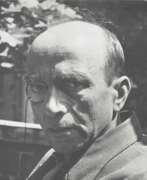

Paul Gangolf, real name Paul Löwy, was a German expressionist painter, lithographer, woodcarver and journalist.
Paul was born into a Jewish family, began his work with articles in magazines on political topics, using the pseudonym Gangolf, during the First World War he served in various troops.
The peak of Paul Gangolf's creative activity came in the 1920s, when he worked in lithography, published and exhibited in Berlin, London and Paris.
After the National Socialists came to power, he was arrested and taken to the Esterwegen concentration camp, where he was murdered. Already after his death, in 1937, as part of the "Degenerate Art" campaign, Gangolf's paintings were confiscated from museums in Nazi Germany and most were destroyed. Surviving works by the artist can be found at the Museum of Modern Art in New York and others.


Franz Gertsch is one of Switzerland's most outstanding contemporary artists. Throughout his career, he has produced a wide range of paintings and graphic works in which he tries to find a particular approach to reality. Although the author uses photographs or slide projections as his starting points, the paintings adhere to a logic of their own which seeks the correctness of all elements. Woodcuts also occupy a special place in Franz Gertsch's work.


Jan Gossaert was a French-speaking painter from the Low Countries also known as Jan Mabuse (the name he adopted from his birthplace, Maubeuge) or Jennyn van Hennegouwe (Hainaut), as he called himself when he matriculated in the Guild of Saint Luke, at Antwerp, in 1503. He was one of the first painters of Dutch and Flemish Renaissance painting to visit Italy and Rome, which he did in 1508–09, and a leader of the style known as Romanism, which brought elements of Italian Renaissance painting to the north, sometimes with a rather awkward effect. He achieved fame across at least northern Europe, and painted religious subjects, including large altarpieces, but also portraits and mythological subjects, including some nudity.


Werner Gothein was a German painter, sculptor, printmaker and ceramicist-designer.
Gothein studied art in Berlin and mastered the techniques of painting, sculpture and wood engraving. In the 1920s, he began designing ceramic objects for the Karlsruhe State Maiolica Manufactory and the Felten-Vordamm ceramic factories.
In 1937, as part of the Nazi "Degenerate Art" campaign, Gothein's graphics were withdrawn from German museums and collections, most of them later destroyed. After the end of World War II, the artist continued to create woodcuts.


Kęstutis Grigaliūnas - Lithuanian graphic artist, art teacher. 1988-1989 created linen carvings, wood carvings, screen prints, etchings, illustrated books. Since 1990 one of the first Lithuanian graphic designers to use the color screen printing technique. Made a cut out of cardboard and plywood. It is characterized by a pronounced graphic beginning - lines, signs, ornaments, figurative and abstract motifs are used. Since 1998 creates more complex plastic graphic works and cut-outs, they feature postmodernism features, pop art, Fluxus elements, decorative, eclectic images. A playful mood, irony, and various intellectual references to the images of Lithuania and other cultures and civilizations prevail.




Walter Helbig is a German and Swiss painter, graphic designer and woodcarver. He works in Dresden on church paintings. Helbig participated in the founding and first exhibition of the "Neue Secession" in Berlin in 1910. Helbig took part in the first Modern Bund exhibition in 1911 in Lucerne and in the second, larger one, at the Kunsthaus in Zurich. In 1914, some painters from the vanished “Modern Bund”, including Helbig, took part in the first Dada exhibition at the Galerie Coray in Zurich. Helbig is also represented in the third Dada exhibition and contributes to the magazine Der Zeltweg 8 but does not participate in the activities of the Dadaists. In 1919, he was one of the signatories of the “manifesto of radical artists” 9 in Zurich, and joined the “November group” in Berlin. Helbig lived in Zurich from 1916 to 1924 and in 1916 became a member of the GSMBA (Society of Swiss Painters, Sculptors and Architects), in which he regularly participated. Since the First World War, his artistic work has turned to religious and mythical subjects. In 1924 Helbig, like many other artists, moved to Ascona due to the low cost of living and founded the movement Der Große Bär. During this time, Helbig painted landscapes, still lifes and portraits. Walter Helbig had his first major solo exhibition in Zurich in 1948 and became a member of the Association of German Artists in 1952. After the Second World War, he also followed the artistic currents of the time, abstract expressionism and experimented with informal art in the 1960s.


Vytautas Jurkūnas (Russian: Витаутас Юркунас) was a Lithuanian graphic artist, celebrated for his distinctive approach to printmaking and book illustration. Born in 1910 in Vindeikiai, he carved out a significant presence in the Lithuanian art scene from the interwar period through to the late 20th century, until his death in 1993 in Vilnius. Jurkūnas' education at the Kaunas School of Art laid the groundwork for a career that spanned teaching at the Vilnius Art Institute, where he influenced generations of artists, and exploring a wide array of graphic techniques, notably in linocut and wood engraving.
His early works, such as "Mother with Child" (1935) and the "Fishermen" series (1937-1939), showcase a unique style characterized by expressive lines, dynamic strokes, and a blend of realism with abstraction. During WWII, Jurkūnas produced compelling compositions reflecting the brutality of war, which added depth to his portfolio of socially and politically charged themes. Post-war, he gained renown for his book illustrations, employing linocut and wood engraving techniques to create images that resonated deeply with the textual narratives they accompanied. Notably, his illustrations for Kristijonas Donelaitis' "The Seasons" received significant acclaim.
Jurkūnas' contributions to Lithuanian graphic art are preserved in the collections of the National M. K. Čiurlionis Art Museum, the Lithuanian National Museum, and internationally, showcasing his enduring legacy. His work received the LSSR State Prize in 1957, marking a high point in his career and affirming his status as a pivotal figure in Lithuanian art.
For collectors and experts in art and antiques, Vytautas Jurkūnas' oeuvre offers a compelling study in the evolution of Lithuanian graphic art, with works that reflect the socio-political landscape of his time and his mastery of graphic techniques. To stay updated on exhibitions and auctions featuring Vytautas Jurkūnas' works, sign up for updates. These subscriptions provide insights into new sales and events dedicated to his legacy, offering a unique opportunity to engage with the rich history of Lithuanian art.
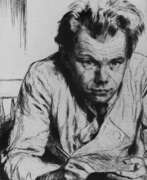

Hermann Kätelhön was a German artist of the first half of the twentieth century. He is known as a realist painter, graphic artist, woodcarver and ceramicist.
Kätelhön created works depicting the people and nature of middle Germany, including portraits of peasants and sketches of fieldwork scenes. His graphic series "Work" as well as his drawings on the theme "Mining Leaders" explore the labor of miners. The artist later turned to depicting nature, especially water, including springs, rivers, glaciers, and seas.




Sergey Timofeyevich Konenkov (Russian: Серге́й Тимофеевич Конёнков) was a Russian and Soviet sculptor, often hailed as "the Russian Rodin." Born into a peasant family in 1874 in the Smolensk region, he pursued his passion for art, studying at the Moscow School of Painting, Sculpture and Architecture, and later at the Academy of Arts. Konenkov's work was deeply influenced by his roots, leading to the creation of sculptures that blended Russian folklore with Hellenic and Russian culture.
Konenkov's career took a significant turn when he moved to the United States in 1923, where he stayed for 22 years. This period was marked by his exploration of biblical themes, creating renowned works that depicted Jesus Christ, Christian prophets, and apostles. His notable commission of a sculpture of Albert Einstein by Princeton University highlights his prominence during this period. Upon his return to the USSR under Stalin's directive, Konenkov continued his artistic endeavors, receiving numerous accolades including the golden star of the Hero of Socialist Labour and the order of Lenin.
His legacy includes a vast collection of works, with some of his most famous sculptures housed in the Tretyakov Gallery and the museum dedicated to his works in Smolensk, established posthumously in 1970. The museum's foundation was laid with forty of his creations, showcasing his significant contribution to Russian and Soviet art.
For collectors and experts in art and antiques, Konenkov's sculptures represent a unique fusion of cultural narratives and a testament to his innovative approach to sculpture. His works continue to be celebrated for their depth, creativity, and influence on the art world.
To stay updated on sales and auction events related to Sergey Timofeyevich Konenkov's work, sign up for updates. This subscription ensures you're informed about the latest opportunities to own a piece of Russian and Soviet art history.
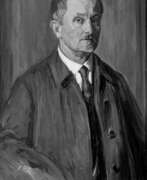

Wilhelm Laage was a German painter, graphic artist, engraver and woodcarver.
Laage attended the Hamburg School of Crafts and the Art Academy in Karlsruhe, and in 1896 began working with woodcuts and lithography. In 1904 Lage took part in exhibitions in Vienna and Dresden, in 1914 he was awarded the Villa Romana Prize, the Honorary Prize of the City of Leipzig and the State Medal at the International Graphic Exhibition in Leipzig. Wilhelm Laage was a member of the German Artists' Association.


Jean Lébédeff, birth name Ivan Konstantinovich Lebedev was a French painter and graphic illustrator of Russian origin. He was an activist of the anarchist movement. Representative of the Russian creative and political emigration in France. Author of drawings and engravings depicting literary heroes from the works of Pushkin, Gorky, Kuprin and Tolstoy.


Mel Lindquist, born Melvin Benjamin Lindquist, is an American engineer who pioneered the American Studio Wood Turning movement.
The founder of the studio wood turning movement, Mel Lindquist applied his basic machine tool techniques and engineering expertise to pioneering gouging methods called "blind boring" or "blind turning" that are widely used today.






Karl Opfermann, a German sculptor and graphic artist born in 1891 in Rødding (now Denmark), carved a niche for himself in the realms of art and culture. His initial training as an ornament creator led him to the influential circles of Hamburg and Berlin, where he honed his artistic skills under the guidance of Heinz Wedding, Fritz Heit, and Richard Luksch. Opfermann's artistic journey was deeply intertwined with notable groups like the "Hamburgische Sezession" and the "Novembergruppe" in Berlin, where he played a pivotal role in shaping the local sculptural landscape from 1919 to 1933.
Tragically, Karl Opfermann's works became a target during the "Entartete Kunst" (Degenerate Art) action in 1937 by the Nazis, leading to their removal and destruction from German museums. A significant portion of his oeuvre was further lost in a bombing in 1943, which destroyed his studio in Hamburg. Despite these challenges, Opfermann's legacy persists, with efforts to reconstruct his life and works focusing on the years before 1943, the period before the destruction wrought by the Nazis and World War II.
Karl Opfermann's artistic expression was rooted in German Expressionism, a movement born out of resistance and reaction, emphasizing emotion and individual experience. His works, spanning various mediums including wood, stone, and ceramics, reflect a profound emotional depth and a unique exploration of human form and expression.
For collectors and experts in art and antiques, Karl Opfermann's work offers a compelling glimpse into the turbulent yet artistically rich period of early 20th-century Germany. His sculptures and graphic art, held in various collections throughout Germany, including Hamburg and Flensburg, stand as a testament to his enduring impact on German Expressionism.
To delve deeper into the world of Karl Opfermann and stay informed about new sales or auction events related to his work, consider signing up for updates. This subscription is an opportunity to explore and appreciate the profound legacy of this influential artist.


Elijah Pierce was a 20th-century wood carver. Pierce was the youngest in his family born from a former slave on a farm in Baldwyn. He began carving at a young age using a pocket knife. He first started carving animals because of his prior life of growing up on a farm. Pierce was honored with the National Heritage Fellowship for his art and influence in the woodcarving community in 1982.


Lucien Pissarro was a French painter, graphic artist and woodcutter, representative of Pointillism. Son of Camille Pissarro. Since 1890, he lived and worked in England.
Lucien Pissarro initially studied painting under his father. He later developed his own artistic style influenced by the neo-impressionist techniques of Georges Seurat and Paul Signac. Like other Neo-Impressionist painters, Pissarro used broken strokes and divisionism techniques to create light and vivid effects.
The subjects of Pissarro's paintings often included landscapes, rural scenes and coastal vistas, reflecting his love of nature and the countryside. He was particularly fond of capturing the effects of light and atmosphere in his paintings, using a subtle and harmonious colour palette.


Walter Tanck was a German landscape painter, engraver and woodcarver. He studied painting with Franz Nölken in Hamburg.
In 1937, as part of the Nazi "Degenerate Art" campaign, his graphic portfolio "Don Quixote" (15 etchings and a lithograph on the title page) from the Dusseldorf Art Collection and his panel "Nude Woman" were confiscated and destroyed.


Clifford Possum Tjapaltjarri was an Australian painter, considered to be one of the most collected and renowned Australian Aboriginal artists. His paintings are held in galleries and collections in Australia and elsewhere, including the Art Gallery of New South Wales, the National Gallery of Australia, the Kelton Foundation and the Royal Collection.


